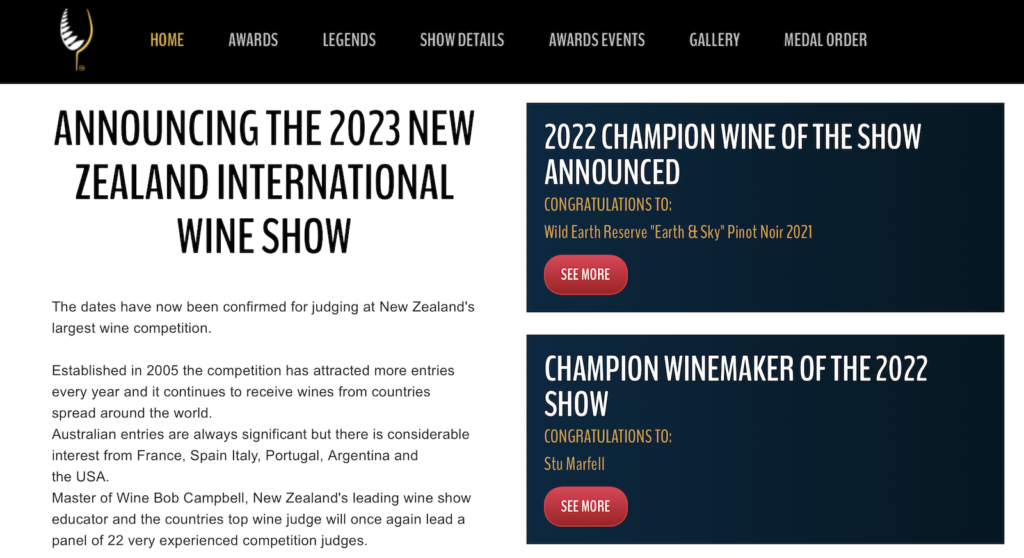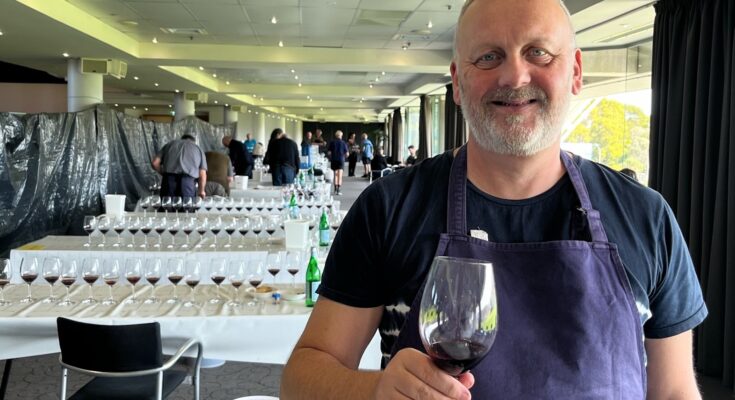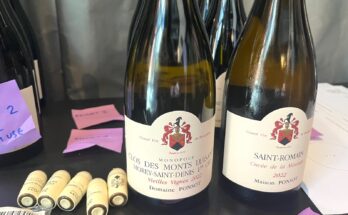This time of year swings around to new releases of wines, and, with it, the swathe of Wine Shows that dole out the Medals – hopefully Gold – and Trophies to these wines. This week it is the biggest of the shows in the country – the New Zealand International Wine Show. Over in Albany a team of volunteers is gathering to assemble nearly 2000 entries into dozens of classes – the bottles stretch across (what seems like) kilometres of tables.
The hall is split defiantly in two – back room and front room. The toil and trouble goes on in the back. A team is dedicated to glassware, another to logging and entering data onto banks of laptops. The wines sit neatly labelled with unique codes, ready for their moment in the sun. On the other side of the huge black curtains is the judging zone – ranks of white trestle tables with specialist table coverings – marked with numbered squares. The back room steward team roll through this room carrying the precious cargo and carefully lay out the ‘flight’. Each steward carries a set of a single wine that goes into a numbered square.
The stewards can enter the judging area, but no judge will step foot ‘out back’. Judges convene into ‘panels’ – each with a panel leader, and an assigned steward who collates scores and synchronises timings with the panel leader. Judging itself is quietly contemplative. Wines are judged quickly – a flight of twenty or so taking around twenty minutes. Each wine is given a rating by each judge – their personal rating.
When all judges are finished tasting, the ratings are read out to each other. Sometimes it happens that each wine gets the same rating from each judge – everyone agrees it is a Silver medal. Other times it’s a conversation and a consensus is agreed. Any judge has to be prepared to move up or down on their rating. You can, of course, dig your heels in and state your case for your personal rating – this is encouraged and respected. Everyone will have one or two a day where it is a ‘love it or hate it’ scenario.
Wines are given ratings of Gold medal, or a Silver, Bronze – or the dreaded ‘No Award’. A wine that gets a Gold rating from the panel gets ‘called back’ That’s to say, a new glass is poured, and this time the wine goes not just back to that panel, but to the Chief Judges as well. This elite team just sees the ‘best of the best’. All they taste in a day are the wines that are ‘call backs’ – the potential Gold medals. Today’s Chief Judges are Bob Campbell MW (Head Judge), Tony Bish, John Hancock and Larry McKenna. Not a bad set of experience there! Each judge will then deliver a single rating – typically “Gold” or “Silver” gets called out in turn – and Head Convener (Mr Kingsley Wood) notes down the final ratings. If everyone calls “Gold” then the wine gets a “Double Gold” rating – the highest rating possible.

Not every panel gets the same type of wines. There wouldn’t be enough Dry Riesling entered to involve every judge! But pretty much everyone gets to participate in the more populous classes – Chardonnay, or Sauvignon Blanc. Last year in a day I started on 68 rosés, then went to 45 Pinot Noirs and ended the day on 24 ‘International red varieties’. Today it is 45 Chardonnays, then 66 Syrah, and finally Shiraz-predominant blends. Whilst the teeth are black by the end of that, I’m still standing – you spit out every mouthful into large buckets stationed at the end of each judging table.
Towards the end of each day a judge will be asked to give a vote to the ‘Trophy’ wines. These are the best of the best from each class. Today it is 14 Chardonnays, and then a dozen Syrah/Shiraz. Not many notes are taken at this point, it is just a straight shoot out – which one does each judge like the most? To get a Gold Medal is excellent; but to win your class and get the Chardonnay Trophy (for example) is exceptional. It also puts you in the running for the grand prize – the ‘Champion Wine of Show’, where all the Trophy winners duke it out for the honour of being, effectively, New Zealand’s best wine – assuming a local wine wines it.
Judging is daunting, challenging, hard physical work; but to flex those tasting muscles in such a straightforward way is great experience for those whose interest lies in such things. All wines are served blind – all you know is the type of wine it is. So you’re purely saying ‘is this delicious?’ 145 times a day. It’s pretty basic stuff. Just a bit of nous and experience helps. Since Rule no.1 at WineFolio is exactly that… ‘is it delicious?’ then finding the best is what I do every day. At a wine show you just get to do that with 20 colleagues. A good day.




